ABOUT THE JOURNAL
Kinesiologia Slovenica is an international journal that stimulates and presents scholarly enquiry in the broad field of physical activity, human movement, exercise, physical education, and sport. It brings together contributions from a wide range of disciplines across the natural and social sciences and humanities and occasionally devotes Special Issues to major topics and themes within the field. Contributions are published from all regions of the world, promoting international communication among scholars and professionals.
Kinesiologia Slovenica is published by the Faculty of Sport, University of Ljubljana and is supported by the Slovenian Book Agency and the Foundation for financing sport organisations in Slovenia
EDITORIAL BOARD
Editor-in-Chief: Mojca Doupona Topič
Section Editor: Miran Kondrič and Katja Tomažin
Editorial Board:
Morin Jean Boint, Universite de Lyon, France
Jay Coakley, University of Chichester, England
Guillaume Millet, Universite de Lyon, France
Andrea Petroczi, Kingston University, England
Lana Ružić, University of Zagreb Croatia
Damir Sekulić, University of Split, Croatia
Tsung Min Hung, Taipei Physical Education College, Taipei
Aleš Filipčič, University of Ljubljana, Slovenia
Vedran Hadžič, University of Ljubljana, Slovenia
Tanja Kajtna, University of Ljubljana, Slovenia
Bojan Leskošek, University of Ljubljana, Slovenia
Vojko Strojnik, University of Ljubljana, Slovenia
Matej Supej, University of Ljubljana, Slovenia
Igor Štirn, University of Ljubljana, Slovenia
Mateja Videmšek, University of Ljubljana, Slovenia
MANUSCRIPT SUBMISSION
The journal publishes original empirical and theoretical articles, review articles and preliminary research reports contributing to the knowledge about kinesiology. All papers should be written in economic, clear, intelligible and concise style. An empirical paper should report original research, presenting all the standard elements of scientific investigation (introduction, method (including participants, instruments and procedure), results, discussion, references). A theoretic paper is expected to draw on the existing research literature to advance theory in any area of kinesiology. It should examine in detail and critically analyze selected models and/or theories, while it should describe empirical data only if they are directly related to theory. A review article is a critical evaluation of material that has already been published. The aim of the review article is to analyse, evaluate, synthesize and not just reproduce scientific knowledge. It is composed of the following sections: problem definition, summary of previous research, explanation of subject matter inter-relations, contradictions, problems and suggestions for further research. A preliminary research report should present findings of an empirical report, presenting all standard elements of scientific investigation. It represents a short report on the completed part of an original research work which is still in progress. Reports of professional practice will need to demonstrate academic rigour, preferably through analysis of program effectiveness, and go beyond mere description.
Submission of a paper implies that it has not been published previously, that it is not under consideration for publication elsewhere, and that if accepted it will not be published elsewhere in the same form, in English or in any other language.
Authors are requested to submit 3 copies of their original manuscript and figures to: Kinesiologia Slovenica, Responsible Editor (Katja Tomažin, PhD), Gortanova 22, 1000-SI Ljubljana, Slovenia (E-mail: kinsi@fsp.uni-lj.si or katja.tomazin@fsp.uni-lj.si).
The text is also to be sent in electronic form; on a CD or by e-mail, prepared by the MS WORD text editor, without any margin alignment or hyphenation. A template is available for downloading at the KinSI homepage.
Manuscript preparation - general:
Manuscript should be prepared following the general style guidelines set forth in the Publication Manual of American Psychological Association (6th Edition, 2010). The editors reserve the right to adjust the style to certain standards of uniformity. Each manuscript, meeting the technical standards and falling within the aims and scope of the journal, will be subject to double-blind review by two independent reviewers. Authors should retain a copy of their manuscript since we cannot accept responsibility for damage or loss of papers.
Paper length:
While no maximum length of contributions is prescribed, authors are encouraged to write concisely.
Cover page:
It should contain the English and the Slovene title of manuscript (for non-Slovene speaking authors prepared by the Editorial Board), and running head. Running head for publication is the abbreviated title that is printed on the top of the pages and should have a maximum of 50 characters, counting letters, punctuation, and spaces between words. The corresponding author should be identified (include the telephone and fax numbers, e-mail address). For all co-authors full name, affiliated institution, and postal address must be given. The cover page shall include the following statement: "The undersigned Authors transfer the ownership of copyright to the journal Kinesiologia Slovenica, should their work be published in KinSI. We declare that the article is original, has not been submitted for publication in other journals and has not already been published. We also declare that the research reported in the paper was undertaken in compliance with the Helsinki Declaration and the International Principles governing research on animals." The cover page must be signed personally by the first author. Prepared cover pages are available and will be sent on request or can be downloaded from the homepage on the Internet (http://www.kinsi.si).
First page:
It shall contain the English title, the abstract in English and in Slovene (for non-Slovene speaking authors prepared by the Editorial Board). The abstract should be structured, not exceeding 200 words, covering the main factual points of introduction and statement of problem, method, results and conclusions. Authors are requested to supply a maximum of eight key words accurately describing the contents of the manuscript.
Text:
Please follow the guidelines set forth in the Publication Manual of American Psychological Association (6th Edition, 2010). The text of an empirical paper should be divided into the following sections: introduction, method (including participants, instruments and procedure), results, discussion, and references. Do not import tables and figures into the text.
Introduction:
The purpose of the paper should be stated, the reasons for the research or study given and (in short) the relevant findings of prior studies presented.
Introduction:
The method section describes in detail how the study was conducted. Participants, phenomena or objects under observation should be precisely described (Participants). The subsection on apparatus (Instruments) describes the apparatus or materials used and their function in the experiment. The procedures (Procedures) should be described in such detail as to enable repetition of the experiment and gathering of comparable data. Precedence should be given to established methods, which also includes statistical procedures. Results: Limit the number of tables and illustrations to the minimum and use them only as a qualification and support of your statements. Use graphs as an alternative to tables, but do not duplicate the information in tables and graphs. Define the statistical terms, abbreviations and symbols. All given units should be in accordance with the international metric system, use the decimal point, not the comma. The results should be presented in the text, tables and illustrations in a logical order. Do not repeat the data from the tables or illustrations in the text, present only important findings.
Discussion:
The aim of the discussion section is to evaluate and interpret the implications of results, especially with respect to the original hypothesis. Discuss the implications and possible limitations that you have found and that can be expected in further studies. Compare your work with previous research. Emphasis should be put on new and important aspects of the study and the conclusions that follow. Do not repeat data or other information given in the introduction or results in detail. Connect the conclusions with the aims of the work, but avoid statements and conclusions that do not follow from your data. State new hypotheses if your data warrants them, but make sure that it is clear that they are only hypotheses. If you use data from published or unpublished sources, obtain permission, acknowledge it and list the source in the proper chapter.
Abbreviations:
Use only standard abbreviations. Avoid using abbreviations in titles and abstracts. The word or term that is to be abbreviated should be given in full the first time, immediately followed in parenthesis by the abbreviation that will be used afterwards. The standard measurement units are an exception to this rule.
References:
Each statement, finding or thought of others should be backed by a reference. The references in the text should be cited according to the APA system (see: Publication Manual of the American Psychological Association, 6th Edition, 2010; see also: http://www.apastyle.org). In parenthesis, the surname of the author should be given, separated by a comma from the publication year. In the case of more than one author, up to six should be given - before the last surname use "and" instead of a comma. If there are more than six, name only the first and add "et al." Join the names in a multiple-author citation in running text by the word and. In parenthetical material, in tables and captions, and in the reference list, join the names by an ampersand (&). All citations must be included in the list of references given at the end of the article. This list should contain only works that are published or otherwise publicly available. References should be written according to the APA system. All the authors should be given, regardless of their number. If the author is not known, start with the title of the work. If you are citing a work that is in print but has not yet been published, state all the data and instead of the publication year write "in print". Citations such as personal communication, unpublished lectures or presentations and similar are not to be included in the references list. The basic data on the works, such as the author, publisher, title, etc., should be given in the language of the original publication. If the work is not written in English, provide for an English translation of the title in square parenthesis immediately after the original title (see the given reference examples).
Examples of references citation:
Videmšek, M., Šiler, B., & Fišer, P. (2002). Slepa miš, ti loviš! : ustvarjalne gibalne igre za otroke [Hide and seek! : creative motor games for children]. Ljubljana: Fakulteta za šport, Inštitut za šport.
Zupan, A. (2010). Principi reševanja konfliktnih situacij pri učenju smučanja otrok [Principles of resolving conflict situations at teaching children skiing]. Unpublished bachelor's thesis, Ljubljana: Fakulteta za šport.
Filipčič, A. (1993). Zanesljivost in veljavnost izbranih in motoričnih testov v tenisu [Reliability and validity of the chosen motorics tests in tennis]. Unpublished master's thesis, Ljubljana: Fakulteta za šport. Kinesiologia Slovenica 91
Tomažin, K. (2001). Spremembe površinskega EMG signala pod vplivom periferne utrujenosti : doktorska disertacija [Changes in surface EMG signal under the influence of peripheral fatigue]. Unpublished doctoral dissertation, Ljubljana: Fakulteta za šport.
Schutz, R. W., & Gessaroli, M. E. (1993). Use, misuse and disuse of psychometrics in sport psychology research. In R. N. Singer, M. Murphey, & L. K. Tennant (Eds.), Handkbook of research on sport psychology(pp. 901-917). New York: Macmillan.
Cronin, J.B. & Hansen, K.T. (2005). Strength and power predictors of sports speed. Journal of Strength and Conditioning Research, 19(2), 349‒357.
Baca, A., Kornfeind, P., & Heller, M. (2007). Two systems for providing KR feedback in table tennis training. In M. Kondrič & G. Furjan Mandić (Eds.), Proceedings book of The 10th Anniversary ITTF Sports Science Congress (pp. 316 - 320). Zagreb: University of Zagreb, Faculty of kinesiology; Croatian Table Tennis Association; International Table Tennis Federation.
APA Style: Reference Examples for Electronic Source Materials. (n.d.). Retrieved June 9, 2011, fromhttp://www.apastyle.org/elecsource.html#77
Illustrations:
All illustrations (photographs, sketches, schemata, diagrams, algorithms and other graphical material) should be provided in camera-ready form, suitable for reproduction (which may include reduction) without retouching. Photographs, charts and diagrams are all to be referred to as "Figure(s)" and should be numbered consecutively in the order in which they are referred to. They should accompany the manuscript, but should not be included within the text. All illustrations should be prepared by computer software, each printed on a separate page. Each figure should be saved in a standard graphics format (EPS, GIF, TIF). It must be made absolutely clear in the text where these illustrations should be included. All figures are to have a caption. Captions should be supplied on a separate sheet. Each illustration should have a number and a title. Legends to illustrations should be given at the foot of the illustration. If illustrations contain symbols, arrows, numbers or letters, these should be explained in detail in the legend. Line drawings: Good quality printouts on white paper produced in black ink are required. All lettering, graph lines and points on graphs should be sufficiently large and bold to permit reproduction when a diagram has been reduced to a size suitable for inclusion in the journal. Dye-line prints or photocopies are not suitable for reproduction. Do not use any type of shading on computer-generated illustrations. Photographs: Original photographs must be supplied as they are reproduced (e.g. black and white or colour). If necessary, a scale should be marked on the photograph. Please note that photocopies of photographs are not acceptable.
Tables:
Tables should be numbered consecutively and given a suitable caption. No vertical rules should be used. Tables should accompany the manuscript, but should not be included within the text. In should be clearly stated where they are to be inserted within the text (e.g. "Place Table 1 here"). Each table should be printed on a separate sheet. Tables should not duplicate results presented elsewhere in the manuscript (e.g. in graphs). All the necessary explanations and a legend of the abbreviations have to be provided.
Equations:
When giving equations please simplify the complex formulae and check them carefully. Place short and simple equations in the line of text, which should not project above or below the line. To display complex equations, start with a new line with double space above and below the equation. Number the displayed equations consecutively, with the number in parenthesis near the right margin of the page. In articles where complex equations are a fundamental part of the manuscript and it is impossible to present their development in full, we advise that the authors present the missing parts in the form of a separate informal written communication to the referees. All special characters (where there might be doubt) should be accompanied by a note on the margin of the text.
REVIEWING
All manuscripts, written according to the above instructions will be evaluated via blind review by at least two referees. The referees are chosen by the editor. Assessments by the referees will be presented anonymously to the author and, in the case of substantial reservations, the article will be returned to the author for correction. The author shall again send the Board three corrected copies of the article, with a list of corrections on a separate page; and again the article on a floppy disk or by e-mail.
The Editorial Board guaranties non-disclosure during the reviewing and publication process. The submitted material and floppy disks will not be returned. The authors (contact persons) of the accepted articles shall receive 4 copies of their article and one copy of the journal on publication, while further copies of the article and/or journal can be obtained on the basis of the included order form.
ABSTRACTING AND INDEXING
The journal Kinesiologia Slovenica is indexed in COBISS (IZUM, Slovenia), SportDiscus with full text (SIRC, Canada), SPONET (Germany), and is a part of EBSCO Publishing.



















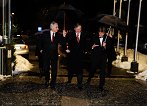


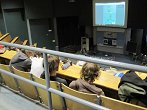
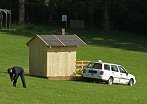
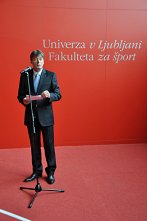
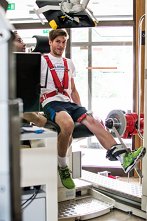





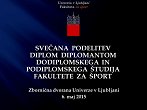
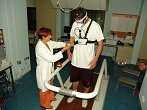


.png)